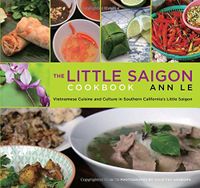Label
All
0
Clear all filters
What we Eat
Appears in
By Ann Le
Published 2011
Food is an important part of the Vietnamese culture. It represents the time for families to be together after a busy day, and it is the principal component of celebrations and festivals. The women of the house are generally responsible for the meals, though men are expected to lend a hand, or to cook if the wife or daughter is indisposed. The quality of a woman’s cooking is a reflection of her character and whether she was raised properly.
The Vietnamese pride themselves in cuisine that uses only the freshest ingredients—a principle applicable to everything from produce to seafood. Fresh herbs and vegetables play a pivotal role in the dining experience. From the citrusy, cumin-flavored rice paddy herb to the licorice and cinnamon tastes of the perilla leaf, herbs wrap a second layer of flavor around the food they adorn. Fresh produce is also important to help achieve the contrast of textures that Vietnamese cuisine is known for. Crunchy, crispy, al dente textures derived from vegetables and fruits make all the difference to otherwise simple dishes. The ubiquitous salad platter consists of sliced or julienned cucumbers, green or red leaf lettuce, bean sprouts, sprigs of mint, coriander, Thai basil, and whatever else the local garden yields.
Become a Premium Member to access this page
Unlimited, ad-free access to hundreds of the world’s best cookbooks
Over 160,000 recipes with thousands more added every month
Recommended by leading chefs and food writers
Powerful search filters to match your tastes
Create collections and add reviews or private notes to any recipe
Swipe to browse each cookbook from cover-to-cover
Manage your subscription via the My Membership page
Best value
Part of
Advertisement
Advertisement
The licensor does not allow printing of this title


